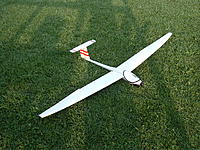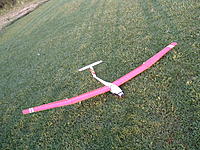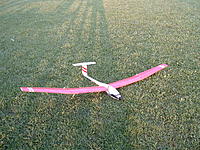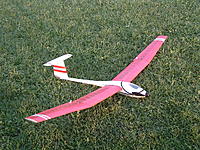Phil's Thermal Rex, or Phil's Rex for short, is a hybrid from a fuselage of the scale ASW 28 sold by hobby king. see
https://www.hobbyking.com/hobbyking/s...ider_PNF_.html
and the full size:
http://www.easternsailplane.com/east...hleicher/ASW28
the reason why i choose this fuselage is because the looks are like science-fiction but it is very much like the full size. although i did not use the wing shape (especially the wing tips).
(i will be adding data at the bottom of this thread)
the new balsa wing it is a 2mt wingspan, 460 sqin, 543 gr auw w/2x1300 lipos; naca 6409 airfoil.
i used the foam fuselage and tail, and avionics, and designed a woody wing with larger area and an undercamberer airfoil for slower flights.
i got the whole plane and decided to try it as is, before discarding the wing. and boy, was i for a surprise! it falls into a stall and a spin unexpectedly, and i crashed it several times, breaking the nose and reinforcing it, until i throwed away the wing and started my own. fortunately with it the plane is now stable and predictable. originally it comes without dihedral, contrary to the full size, that has some. as the stock was too unstable and prone to snap roll, i added dihedral as per the full size and this helped a little bit; then increased the chord, adding area to the trailing edge, which helped more-but still was a handful. then it was when went into the balsa wing. it has a planked leading edge, polyhedral, and is covered with
...Continue Reading
 Views: 238
Views: 238  Views: 210
Views: 210  Views: 255
Views: 255  Views: 185
Views: 185 